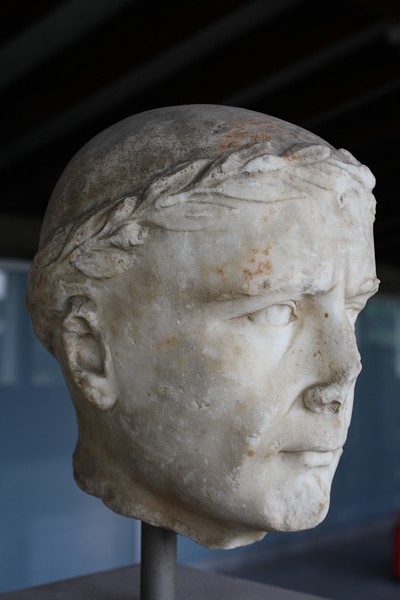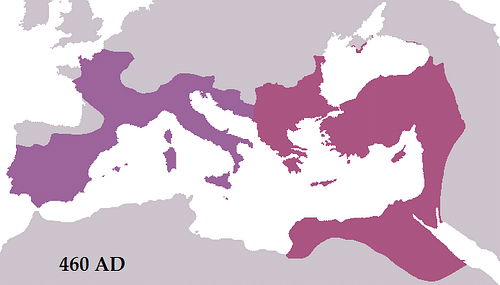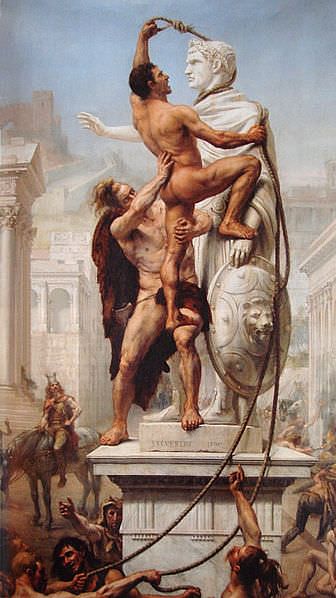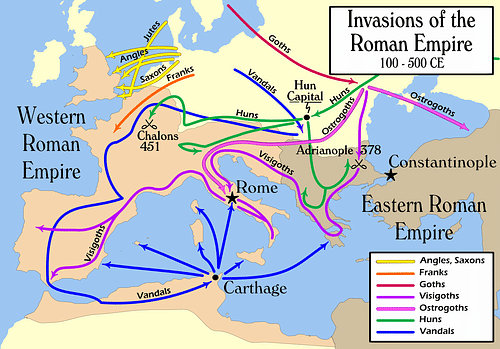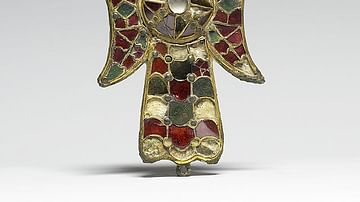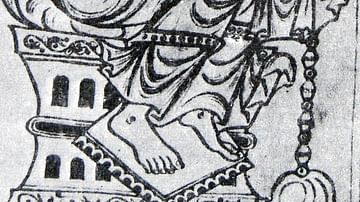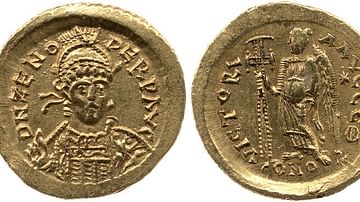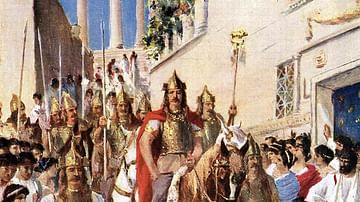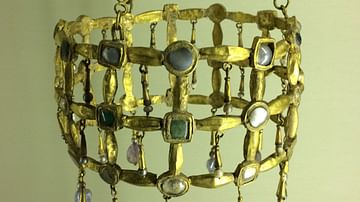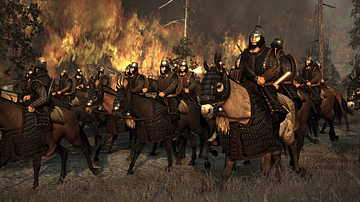To many historians, the fall of the Western Roman Empire in the 5th century CE has always been viewed as the end of the ancient world and the onset of the Middle Ages, often improperly called the Dark Ages, despite Petrarch's assertion. Since much of the west had already fallen by the middle of the 5th century CE, when a writer speaks of the fall of the empire, he or she generally refers to the fall of the city of Rome. Although historians generally agree on the year of the fall, 476 CE, and its consequences for western civilization, they often disagree on its causes. English historian Edward Gibbon, who wrote in the late 18th century CE, points to the rise of Christianity and its effect on the Roman psyche while others believe the decline and fall were due, in part, to the influx of 'barbarians' from the north and west.
Whatever the cause, whether it was religion, external attack, or the internal decay of the city itself, the debate continues to the present day; however, one significant point must be established before a discussion of the roots of the fall can continue: the decline and fall were only in the west. The eastern half - that which would eventually be called the Byzantine Empire - would continue for several centuries, and, in many ways, it retained a unique Roman identity.

External Causes
One of the most widely accepted causes - the influx of a barbarian tribes - is discounted by some who feel that mighty Rome, the eternal city, could not have so easily fallen victim to a culture that possessed little or nothing in the way of a political, social or economic foundation. They believe the fall of Rome simply came because the barbarians took advantage of difficulties already existing in Rome - problems that included a decaying city (both physically and morally), little to no tax revenue, overpopulation, poor leadership, and, most importantly, inadequate defense. To some the fall was inevitable.
Unlike the fall of earlier empires such as the Assyrian and Persian, Rome did not succumb to either war or revolution. On the last day of the empire, a barbarian member of the Germanic tribe Siri and former commander in the Roman army entered the city unopposed. The one-time military and financial power of the Mediterranean was unable to resist. Odovacar easily dethroned the sixteen-year-old emperor Romulus Augustalus, a person he viewed as posing no threat. Romulus had recently been named emperor by his father, the Roman commander Orestes, who had overthrown the western emperor Julius Nepos. With his entrance into the city, Odovacar became the head of the only part that remained of the once great west: the peninsula of Italy. By the time he entered the city, the Roman control of Britain, Spain, Gaul, and North Africa had already been lost, in the latter three cases to the Goths and Vandals. Odovacar immediately contacted the eastern emperor Zeno and informed him that he would not accept that title of emperor. Zeno could do little but accept this decision. In fact, to ensure there would be no confusion, Odovacar returned to Constantinople the imperial vestments, diadem, and purple cloak of the emperor.
Internal Causes
There are some who believe, like Gibbon, that the fall was due to the fabric of the Roman citizen. If one accepts the idea that the cause of the fall was due, in part, to the possible moral decay of the city, its fall is reminiscent of the “decline” of the Republic centuries earlier. Historian Polybius, a 2nd century BCE writer, pointed to a dying republic (years before it actually fell) - a victim of its declining moral virtue and the rise of vice within. Edward Gibbon reiterated this sentiment (he diminished the importance of the barbaric threat) when he claimed the rise of Christianity as a factor in the “tale of woe” for the empire. He held the religion sowed internal division and encouraged a “turn-the-other-cheek mentality” which ultimately condemned the war machine, leaving it in the hands of the invading barbarians. Those who discount Gibbon's claim point to the existence of the same religious zealots in the east and the fact that many of the barbarians were Christian themselves.
To Gibbon the Christian religion valued idle and unproductive people. Gibbon wrote in his book The History of Decline and Fall of the Roman Empire,
A candid but rational inquiry into the progress and establishment of Christianity, may be considered as a very essential part of the history of the Roman empire. While this great body was invaded by open violence, or undermined by slow decay, a pure and humble religion greatly insinuated itself into the minds of men, grew up in silence and obscurity, derived new vigour from opposition, and finally erected the triumphant banner of the cross on the ruins of the Capitol.”
He added that the Roman government appeared to be “odious and oppressive to its subjects” and therefore no serious threat to the barbarians.
Gibbon, however, does not single out Christianity as the only culprit. It was only one in a series that brought the empire to its knees. In the end, the fall was inevitable:
…the decline of Rome was the natural and inevitable effect of immoderate greatness. Prosperity ripened the principle of decay; the causes of destruction multiplied with the extent of conquest, and as soon as time or accident has removed artificial supports, the stupendous fabric yielded to the pressure of its own weight.
A Divided Empire
Although Gibbon points to the rise of Christianity as a fundamental cause, the actual fall or decline could be seen decades earlier. By the 3rd century CE, the city of Rome was no longer the center of the empire - an empire that extended from the British Isles to the Tigris and Euphrates Rivers and into Africa. This massive size presented a problem and called for a quick solution, and it came with the reign of Emperor Diocletian. The empire was divided into two with one capital remaining at Rome and another in the Eastern Empire at Nicomedia; the eastern capital would later be moved to Constantinople, old Byzantium, by Emperor Constantine. The Senate, long-serving in an advisory capacity to the emperor, would be mostly ignored; instead, the power centered on a strong military. Some emperors would never step foot in Rome. In time Constantinople, Nova Roma or New Rome, would become the economic and cultural center that had once been Rome.
Despite the renewed strength that the division provided (the empire would be divided and united several times), the empire remained vulnerable to attack, especially on the Danube-Rhine border to the north. The presence of barbarians along the northern border of the empire was nothing new and had existed for years - the army had met with them on and off since the time of Julius Caesar. Some emperors had tried to buy them off, while others invited them to settle on Roman land and even join the army. However, many of these new settlers never truly became Roman even after citizenship was granted, retaining much of their old culture.
This vulnerability became more obvious as a significant number of Germanic tribes, the Goths, gathered along the northern border. They did not want to invade; they wanted to be part of the empire, not its conqueror. The empire's great wealth was a draw to this diverse population. They sought a better life, and despite their numbers, they appeared to be no immediate threat, at first. However, as Rome failed to act to their requests, tensions grew. This anxiety on the part of the Goths was due to a new menace further to the east, the Huns.
The Goth Invasion
During the reign of the 4th century eastern emperor Valens (364 -378 CE), the Thervingi Goths had congregated along the Danube-Rhine border - again, not as a threat, but with a desire only to receive permission to settle. This request was made in urgency, for the “savage” Huns threatened their homeland. Emperor Valens panicked and delayed an answer - a delay that brought increased concern among the Goths as winter was approaching. In anger, the Goths crossed the river with or without permission, and when a Roman commander planned an ambush, war soon followed. It was a war that would last for five years.
Although the Goths were mostly Christian many who joined them were not. Their presence had caused a substantial crisis for the emperor; he couldn't provide sufficient food and housing. This impatience, combined with the corruption and extortion by several Roman commanders, complicated matters. Valens prayed for help from the west. Unfortunately, in battle, the Romans were completely outmatched and ill-prepared, and the Battle of Adrianople proved this when two-thirds of the Roman army was killed. This death toll included the emperor himself. It would take Emperor Theodosius to bring peace.
An Enemy from Within: Alaric
The Goths remained on Roman land and would ally themselves with the Roman army. Later, however, one man, a Goth and former Roman commander, rose up against Rome - a man who only asked for what had been promised him - a man who would do what no other had done for eight centuries: sack Rome. His name was Alaric, and while he was a Goth, he had also been trained in the Roman army. He was intelligent, Christian, and very determined. He sought land in the Balkans for his people, land that they had been promised. Later, as the western emperor delayed his response, Alaric increased his demands, not only grain for his people but also recognition as citizens of the empire; however, the emperor, Honorius, continually refused. With no other course, Alaric gathered together an army of Goths, Huns and freed slaves and crossed the Alps into Italy. His army was well-organized, not a mob. Honorius was incompetent and completely out of touch, another in a long line of so-called “shadow emperors” - emperors who ruled in the shadow of the military. Oddly enough, he didn't even live in Rome but had a villa in nearby Ravenna.
Alaric sat outside the city, and over time, as the food and water in the city became increasingly scarce, Rome began to weaken. The time was now. While he had never wanted war but only land and recognition for his people Alaric, with the supposed help of a Gothic slave who opened the gates from within, entered Rome in August of 410 CE. He would stay for three days and completely sack the city; although he would leave St. Paul and St Peters alone. Honorius remained totally blind to the seriousness of the situation. While temporarily agreeing to Alaric's demands - something he never intended to honor - 6,000 Roman soldiers were sent to defend the city, but they were quickly defeated. Even though the city's coffers were nearly empty, the Senate finally relinquished; Alaric left with, among other items, two tons of gold and thirteen tons of silver.
Some people at the time viewed the sacking of the city as a sign from their pagan gods. St. Augustine, who died in 430 CE, said in his City of God that the fall of Rome was not a result of the people's abandonment of their pagan gods (gods they believed protected the city) but as a reminder to the city's Christians why they needed to suffer. There was good, for the world was created by good, but it was flawed by human sin; however, he still believed the empire was a force for peace and unity. To St. Augustine there existed two cities: one of this world and one of God.
Barbarian Invasions
Although Alaric would soon die afterwards, other barbarians - whether Christian or not - did not stop after the sack of the city. The old empire was ravaged, among others, by Burgundians, Angles, Saxons, Lombards, and Magyars. By 475 CE Spain, Britain, and parts of Gaul had been lost to various Germanic people and only Italy remained as the “empire” in the west. The Vandals would soon move from Spain and into northern Africa, eventually capturing the city of Carthage. The Roman army abandoned all hope of recovering the area and moved out. The loss of Africa meant a loss of revenue, and the loss of revenue meant there was less money to support an army to defend the city. Despite these considerable losses, there was some success for the Romans. The threat from Attila the Hun was finally stopped at the Battle of Chalons by Roman commander Aelius who had created an army of Goths, Franks, Celts and Burgundians. Even Gibbon recognized Attila as one “who urged the rapid downfall of the Roman empire.” While Attila would recover and sack several Italian cities, he and the Hun threat ended with his death due to a nosebleed on his wedding night.
Conclusion: Multiple Factors
One could make a sound case for a multitude of reasons for the fall of Rome. However, its fall was not due to one cause, although many search for one. Most of the causes, initially, point to one place: the city of Rome itself. The loss of revenue for the western half of the empire could not support an army - an army that was necessary for defending the already vulnerable borders. Continual warfare meant trade was disrupted; invading armies caused crops to be laid to waste, poor technology made for low food production, the city was overcrowded, unemployment was high, and lastly, there were always the epidemics. Added to these was an inept and untrustworthy government.
The presence of the barbarians in and around the empire added to a crisis not only externally but internally. These factors helped bring an empire from “a state of health into non-existence.” The Roman army lacked both proper training and equipment. The government itself was unstable. Peter Heather in his The Fall of the Roman Empire states that it “fell not because of its 'stupendous fabric' but because its German neighbors responded to its power in ways that the Romans could not ever have foreseen… By virtue of its unbounded aggression, Roman imperialism was responsible for its own destruction.”
Rome's fall ended the ancient world and the Middle Ages were borne. These “Dark Ages” brought the end to much that was Roman. The West fell into turmoil. However, while much was lost, western civilization still owes a debt to the Romans. Although only a few today can speak Latin, it is part of our language and the foundation of the Romance languages of French, Italian, and Spanish. Our legal system is based on Roman law. Many present day European cities were founded by Rome. Our knowledge of Greece comes though Rome and many other lasting effects besides. Rome had fallen but it had been for so so long one of the history's truly world cities.
